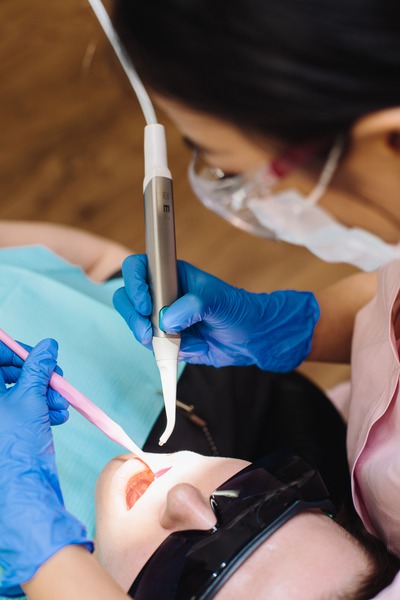How Often Should I Really Visit the Dentist?
It’s a question as old as time: “How often should I really visit the dentist?” It might seem like a straightforward query, but the answer is different for everyone. It’s a blend of personal dental needs, overall health, and even your dentist’s recommendations. Let’s look over this topic and uncover some bright insights into regular dental check-ups.
The Standard Dental Check-up Recommendation
Most experts suggest that a good rule of thumb for the average person is to schedule a dental visit twice a year. This semiannual tradition is touted not just for the sake of oral hygiene but also for preventive care. Regular appointments typically involve a thorough cleaning, an examination of your teeth and gums, and sometimes, X-rays to delve deeper into your mouth’s health.
Individual Needs May Vary
However, it’s about more than sticking rigidly to the twice-a-year mantra. Each month has its own story, with plot twists ranging from genetic factors to lifestyle choices. Some people might need to drop by their trusted dentist like My Pompano Dentist – Andrew Browne DDS PA more frequently due to specific issues such as gum disease, a propensity for cavities or ongoing dental treatments.
Listen to Your Dentist
-
If your dentist thinks you’re the picture of oral health, they might extend the time between visits.
-
On the flip side, if you’re no stranger to dental downsides, they might want to see you more often to keep everything in check.
Risk Factors for More Frequent Visits
-
Smoking: A habit that invites gum disease and tooth decay.
-
Diabetes: This condition jeopardizes gum health, so extra dental diligence is needed.
-
Pregnancy: Expectant moms experience dental shifts that might need more monitoring.
-
Gum Disease: Active periodontal disease requires vigilant care and frequent cleanings.
Do Kids and Teens Need to Go More Often?
In the whirlwind of growth and development, school-aged kids and teenagers might benefit from more frequent dental screenings. This age group is juggling a lot—from changing teeth to new chewing and eating habits—not to mention orthodontic considerations like braces, which can add complexity to dental care.
The Exception is Not the Rule
For emergencies and unexpected dental issues, don’t watch the calendar. Pain, trauma, sudden sensitivity, or a rogue toothache can demand an unscheduled visit. It’s always better to err on the side of caution and call your dentist when something feels off in your mouth. These instances aside, sticking to regular check-ups can often prevent these urgent situations.
Signs You Should See Your Dentist Sooner:
-
Persistent toothache.
-
Swelling in your mouth, face, or neck.
-
Difficulty chewing or swallowing.
-
Gums that are bleeding or painful to the touch.
Why Preventive Care is Your Best Bet
Caught early, many dental dilemmas are far simpler (and cheaper.) to treat. Skip the appointments, and you might not catch that tiny cavity before it becomes a root canal-worthy crisis. Plus, regular cleanings rid your teeth of plaque and tartar build-up that your faithful toothbrush can’t handle.
Benefits of Preventive Care:
-
Keeping minor issues from becoming major.
-
Spotting potential oral health concerns early.
-
Maintaining overall well-being (your oral health affects your whole body.)
A Little About General Procedures
When we talk about those twice-yearly visits, we’re mainly referring to general dental services. These are your baseline care activities that include professional cleanings, regular check-ups, and education on proper oral hygiene. These staples in the dental care diet help maintain your oral health and nip potential problems in the bud.
Adapting to Life’s Changes
Life throws curveballs, and sometimes, that means our dental health objectives need to shift. Aging, for instance, brings about its own set of mouthy matters. Medications, changes in saliva production, and general health conditions can directly impact oral health and may require a revision of your dental visit frequency.
Insurance and Dental Visit Frequency
Dental insurance often covers two preventive visits a year, but make sure to let that dictate your dental habits. Consider your individual needs and consult with your dentist about the best schedule for you. Remember, insurance policies are one-size-fits-all, but your dental health is personal.
Creating Your Dental Visit Roadmap
-
Start with an Evaluation: Whether it’s been six months or six years since your last visit, begin with a full assessment to establish your current dental health status.
-
Discuss with Your Dentist: Have an honest chat about your medical history, dental concerns, and lifestyle factors that might affect your oral health.
-
Set a Schedule Together: Based on the evaluation and discussion, set a routine visit plan that caters to your specific needs.
-
Be Flexible and Reassess: Life changes, and so can your dental health. Be open to updating the visit frequency as needed.
Final Thoughts
You now have a clearer understanding of how often you should really visit the dentist. The general advice hovers around twice a year, but your individual needs could dictate a different schedule. Listen to your body and have open communication with a professional you trust. Are you ready to take charge of your dental health? Don’t wait for a sign – be proactive about your smile. Book an appointment with your trusted dentist today to create a personalized dental care plan that fits your unique needs. Your future self (and your smile) will thank you.








